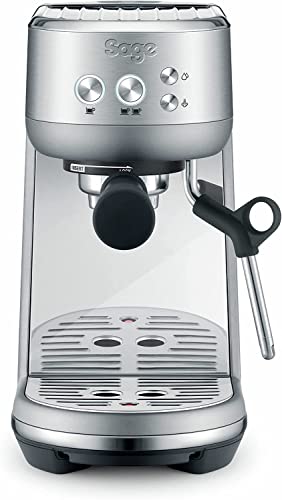How Does Machine Espresso Work?
Machine espresso employs precise pressure and amazing filter technology to make the coffee we love. What exactly is it that makes it work?
To make an espresso hot water is forced under high pressure through finely ground coffee. The process is similar to making drip coffee however the main difference lies in the pressure.
The Group Head
The group head is the portafilter is inserted when you are making espresso. It disperses water in the portafilter, and then controls the pressure of the extraction. There are a variety of group heads, each with its own advantages and drawbacks. Some are designed to provide stability in temperature, while others are specifically designed to handle pre-infusion. Some are designed to control the lever. Some are a combination, such as the E61. This is a preferred choice for baristas due to the fact that it has multiple benefits in one package.

As you can see in the photo above, the group head is equipped with several notches. The portafilter is placed inside these notches, and then twist the head to secure it. A rubber gasket is located inside the notches, which helps create a seal when you insert your portafilter. The notches on the head allow for an exact location of the portafilter which is crucial to ensure an efficient extraction.
Aside from allowing you to effortlessly insert your portafilter the group head is responsible to ensure that the temperature remains even. This is done by cycling hot water around the portafilter and through the brew-basket, ensuring that the temperature is at the right level to extract the coffee. It is important to realize that even a few degree difference can make the difference between a decent and a great espresso.
The Pump
In contrast to piston machines that are manually operated, which rely on a lever to pressurize water, Rotary espresso machines rely on motorized pumps to supply the nine atmospheric bars of pressure required for espresso extraction. The pressure builds by drawing tap water from a reservoir and pumping it through a heat exchanger prior to being pumped through the ground coffee in the group head.
Pumps are generally less expensive and last for longer than piston-driven machines. However, both types of machines can deteriorate due to overuse and inadequate cleaning. Pumps are also more complex mechanically, and can add to the cost of even simplest models.
Some espresso machines eliminate the pump completely and employ steam pressure to create espresso. The disadvantage of this is that the boiler that produces steam also raises the temperature of the water to boiling which can cause excessive extraction. These machines also have to constantly rebuild their pressure between cups. This takes energy and time.
Many espresso machines employ a vibration or rotary pump, which is a vibration model using a rotating disc to generate the pressure, and a rotary model pushing hot water through the grounds under high speed. Both machines can make excellent espresso, but rotary machines are more quiet, durable and less likely to break.
The Boiler
The boiler will heat the water to the right temperature for extraction. The resulting steam reaches the portafilter containing the ground espresso coffee and is then pumped into the cup. During this process, the steam creates pressure and pushes through the grounds of the coffee. This creates a crema on top of the espresso. This is one of the main characteristics of a good espresso.
There are three types of espresso makers. They differ in the type of pump they use and how hot the brew is. There are various ways that the brew can be controlled as well as the dimensions of the cup the machine is capable of making.
The earliest espresso machines were steam types. They employed a single boiler to make both steam and brew however, the pressure they could create was minimal - two bars of atmospheric pressure, at most. This led to the coffee tasting bitter and burnt. This is the reason why Milanese producers Luigi Bezzerra and Desiderio Pavoni invented the modern espresso machine.
The most common espresso machine is a semiautomatic one with an electric pump. When people think of espresso machines, they picture these machines. Semi-automatic machines require you to grind and tamp your beans yourself The pump, however, regulates the water flow and pressure. This is a great compromise between the human touch and mechanized consistency.
The Filter
Espresso machines usually have filters that separate the grounds of coffee from hot water. espresso machine uk is also a vital element of the temperature control system as it prevents the machine from overheating.
It also enhances flavor as a filter allows for a longer bloom phase. This lets the beans release their flavor and allows for a better extraction.
It is important to remember that even the most efficient filter can make a bad cup of coffee. The quality of the beans, and the extraction process, remain vital.
It's in this area that the magic happens. This is the reason why espresso tastes so delicious. The grouphead (also called the brewhead) is where you place the portafilter, the device which you put the grounds of coffee into when making espresso.
Steam-driven espresso machines make use of hot water that is heated inside an airtight container to produce steam. The steam then pushes hot water through grounds of the coffee under pressure. These machines are less expensive and easier for the user to maintain than pumps-driven models. They are however limited for creating the ideal brewing conditions as they only operate with 1-1.5 bar of pressure. The perfect shot requires 9-10 bars.
In recent years, espresso machines driven by a compressed air compressor have become increasingly popular. They use an air-compressor to force hot water through the ground and are much more mobile than electric steam-driven espresso machines.
